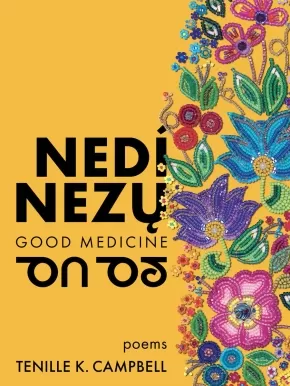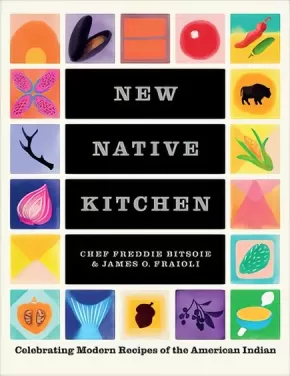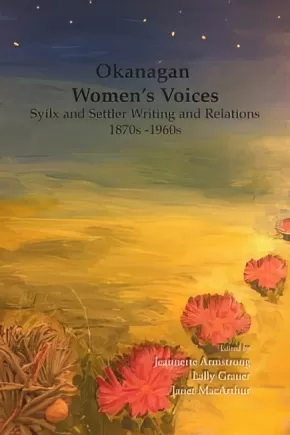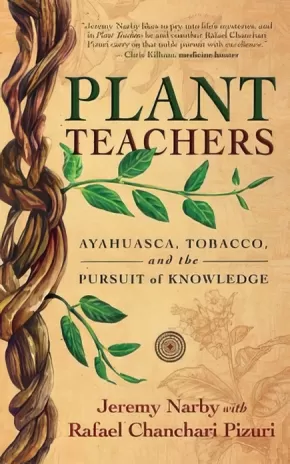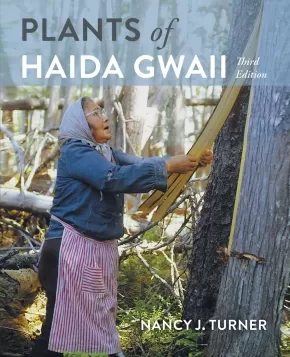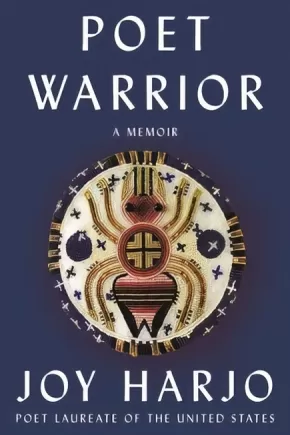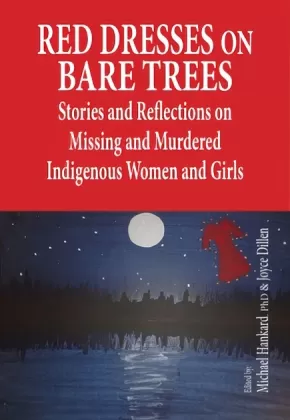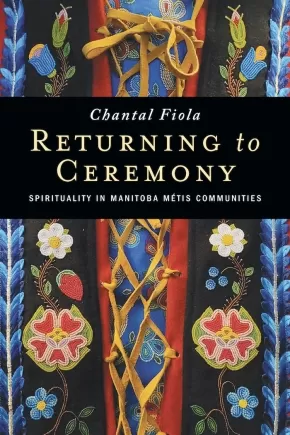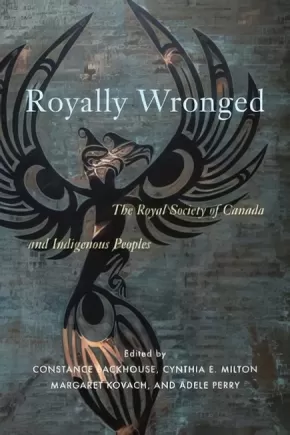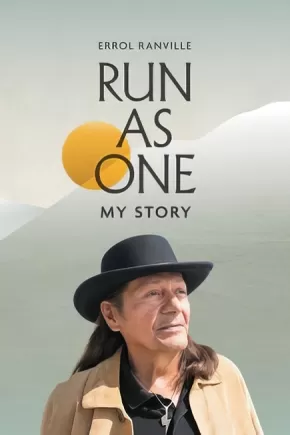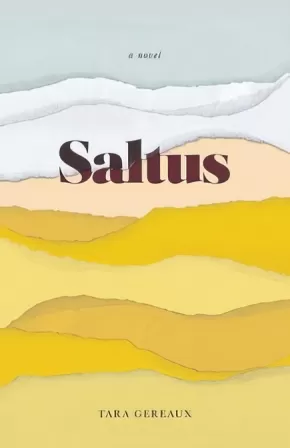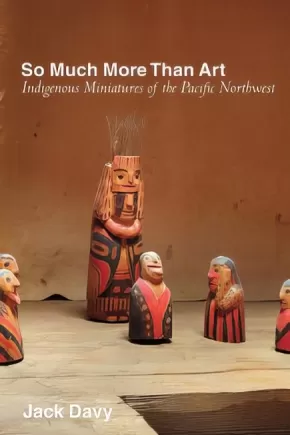Indigenous Studies
Synopsis:
A celebratory, slyly funny, and bluntly honest take on sex and romance in NDN Country.
nedi nezu (Good Medicine) explores the beautiful space that being a sensual Indigenous woman creates - not only as a partner, a fantasy, a heartbreak waiting to happen but also as an auntie, a role model, a voice that connects to others walking the same path. From the online hookup world of DMs, double taps, and secret texts to earth-shakingly erotic encounters under the northern stars to the ever-complicated relationship Indigenous women have with mainstream society, this poetry collection doesn't shy away from depicting the gorgeous diversity in decolonized desire. Instead, Campbell creates the most intimate of spaces, where the tea is hot and a seat is waiting, surrounded by the tantalizing laughter of aunties telling stories.
These wise, jubilant poems chronicle many failed attempts at romance, with the wry humour needed to not take these heartbreaks personally, and the growth that comes from sitting in the silence of living a solo life in a world that insists everyone should be partnered up. With a knowing smile, this book side-eyes the political existence and celebrates the lived experience of an Indigenous woman falling in love and lust with those around her -but, most importantly, with herself.
nedi nezu is a smart, sensual, and scandalous collection dripping in Indigenous culture yet irresistible to anyone in thrall to the magnificent disaster that is dating, sex, and relationships.
Reviews
"Since I was hit on by someone using lines from #IndianLovePoems and immediately went out to buy it, I've been eagerly waiting for Tenille K. Campbell's next collection. What a joy and a blessing to find myself in pages as intimate as staying up late with your best friend sharing truths, as hot as meeting your next lover's gaze, and as sharp as a mean auntie. nedi nezu cements Campbell's reputation as the matriarch of decolonized desire." -Eden Robinson, author of Trickster Drift
"There are many kinds of intimacy in Tenille Campbell's delicious second collection: that of laughing lovers entangled in damp sheets under the star-strewn northern sky; that of a Dene/Metis woman dreaming her relations with the living land, its histories, and its futures; that of a formidably talented woman in all her complex contexts - poet, scholar, mother, lover - who shifts with ease between evocations of knee-trembling desire, wry humour, tender kindness, and aching loneliness. The poems are a love-language that honours the messy, meaningful complexities of sensual self-determination, the fierce assertion of an Indigenous woman's embodied and visionary power. We are lucky indeed to have the restorative gift of Campbell's work in this ever more alienating world. Read it, share it, be transformed." -Daniel Heath Justice, author of Why Indigenous Literatures Matter
"Dare we all have such an opportunity to revel in the intimate oratories of Tenille K. Campbell's matriarchy. She asks us to 'know that we are in ceremony' as she undertakes an album of sensual and sexual vignettes rinsed clean of seeds in gentle spring waters. Alternatively, she interrogates fatphobia, Indigenous masculinities, academia, heteropatriarchy, and untangles the ways in which poetry hinges on the pervasive in the stratosphere of social media. Campbell shows us yet again why Indigeneity is wholly and irrevocably erotic by nature." -Joshua Whitehead, author of Jonny Appleseed
Educator Information
Caution: Mature language.
Additional Information
92 pages | 6.00" x 8.00"
Synopsis:
Modern Indigenous cuisine from the renowned Native foods educator and former chef of Mitsitam Native Foods Café at the Smithsonian’s National Museum of the American Indian
From Freddie Bitsoie, the former executive chef at Mitsitam Native Foods Café at the Smithsonian’s National Museum of the American Indian, and James Beard Award–winning author James O. Fraioli, New Native Kitchen is a celebration of Indigenous cuisine. Accompanied by original artwork by Gabriella Trujillo and offering delicious dishes like Cherrystone Clam Soup from the Northeastern Wampanoag and Spice-Rubbed Pork Tenderloin from the Pueblo peoples, Bitsoie showcases the variety of flavor and culinary history on offer from coast to coast, providing modern interpretations of 100 recipes that have long fed this country.
Recipes like Chocolate Bison Chili, Prickly Pear Sweet Pork Chops, and Sumac Seared Trout with Onion and Bacon Sauce combine the old with the new, holding fast to traditions while also experimenting with modern methods. In this essential cookbook, Bitsoie shares his expertise and culinary insights into Native American cooking and suggests new approaches for every home cook. With recipes as varied as the peoples that inspired them, New Native Kitchen celebrates the Indigenous heritage of American cuisine.
Reviews
“To seek and understand Indigenous foods is to dwell in the lands of our ancestors, to taste the earth and all that grows, from roots to leaf, from field and stream, to even the birds of the sky. Freddie not only has been immersed in this knowledge but has been a true, joyous steward of Native culture through food. This is going to be a staple in my house and will be a great gift for friends, family, and colleagues! I love Freddie!” — Irene Bedard, Iñupiat, Yupik, Métis-Cree, actor, activist, storyteller
“I have always used food as my entry point to learning more about cultures both outside of and within my own—and in New Native Kitchen, Freddie Bitsoie is an exceptional guide, showing off the vibrant, regional native cooking of what is now the United States, giving context to the people who created it while showing off the beautiful ingredients of a truly exciting and diverse cuisine.” — Noah Galuten, chef and author of forthcoming The Don’t Panic Pantry Cookbook
Additional Information
288 pages | 8.00" x 10.00" | 150 Color Photos | Hardcover
Synopsis:
The writing and relations between Syilx women and settler women, largely of European descent, who came to inhabit the British Columbia southern interior from the mid-nineteenth to the early twentieth centuries.
Educator Information
Okanagan Women’s Voices features the writing and stories of seven women: Susan Moir Allison (1845-1937), Josephine Shuttleworth (1866-1950), Eliza Jane Swalwell (1868-1944), Marie Houghton Brent (1870-1968), Hester Emily White (1877-1963), Mourning Dove (1886-1936) and Isabel Christie MacNaughton (1915-2003).
Additional Information
6.00" x 9.00" | Paperback
Synopsis:
The exhaustive, definitive history and stories of the Cega‘ K´i na Nakoda Oyáté (Carry The Kettle Nakoda First Nation), told by the people themselves.
Born out of a meticulous, well-researched historical and current traditional land-use study led by Cega̔ K´iɳna Nakoda Oyáté (Carry the Kettle Nakoda First Nation), Owóknage is the first book to tell the definitive, comprehensive story of the Nakoda people (formerly known as the Assiniboine), in their own words. From pre-contact to current-day life, from thriving on the Great Plains to forced removal from their traditional, sacred lands in the Cypress Hills via a Canadian “Trail of Tears” starvation march to where they now currently reside south of Sintaluta, Saskatchewan, this is their story of resilience and resurgence.
Educator Information
Based on a comprehensive traditional and current land-use study and history of the Carry The Kettle First Nation, combining oral history from Nation Elders and historical/anthropological research.
The destruction of the bison on the Canadian plains, disease, and Canada’s various damaging colonial policies brought profound changes and hardships to the Nakoda; this book chronicles the changes they faced and illustrates their endurance throughout history.
Most of the victims of the Cypress Hill Massacre were ancestors of the Carry The Kettle Nakoda First Nation, and many were forced out of their traditional lands on a Canadian Trail of Tears in 1882–83.
Additional Information
412 pages | 6.00" x 9.00" | Paperback
Synopsis:
A trailblazing anthropologist and an indigenous Amazonian healer explore the convergence of science and shamanism
“The dose makes the poison,” says an old adage, reminding us that all substances have the potential to heal or to harm, depending on their use. This is especially true of tobacco. Although Western medicine treats it as a harmful addictive drug, tobacco is considered medicinal by indigenous people of the Amazon rainforest. In its unadulterated form, it holds a central place in their repertoire of traditional medicines. Along with the hallucinogen ayahuasca, tobacco forms a part of treatments designed to heal the body, stimulate the mind, and inspire the soul with visions. Anthropologist Jeremy Narby first learned of the shamanic uses of ayahuasca and tobacco while conducting fieldwork in the Amazon region decades ago. After witnessing the transformative power of these mind-altering plants, Narby embarked on a quest to understand their effects on human consciousness. His search led him to contact Rafael Chanchari Pizuri, a traditional healer from the Peruvian Amazon. In Plant Teachers, Narby and Pizuri hold a cross-cultural dialogue that explores the similarities between ayahuasca and tobacco, the role of these plants in indigenous cultures, and the hidden truths they reveal about nature. Juxtaposing two distinct worldviews, Plant Teachers invites readers on a wide-ranging journey through anthropology, botany, and biochemistry, while raising tantalizing questions about the relationship between science and other ways of knowing.
Additional Information
144 pages | 5.00" x 8.00" | Hardcover
Synopsis:
For many thousands of years the lands and waters of Haida Gwaii have been home to the Haida. Plants of Haida Gwaii, written with the cooperation and collaboration of Haida knowledge holders and botanical experts, is a detailed and insightful record of the traditional uses of over 150 species of native plants. Moreover, it explains the systems of knowledge and understanding that enabled the Haida to use the resources of their islands sustainably from one generation to the next over millennia.
The Haida names of these plants indicate their importance, as do the many narratives featuring them. From the ts’uu—massive western red-cedars—of the forests which provide wood used for canoes, house posts, poles and boxes, and bark carefully harvested for weaving mats, baskets and hats, to the ngaal—tough, resilient fronds of giant kelp—used to harvest herring eggs, the botanical species used by the Haida are found from the ocean to the mountain tops, and are as important today as ever before. With over 250 photographs and illustrations, this book is both beautiful and informative.
Additional Information
272 pages | 7.50" x 9.25"
Authenticity Note: As there are contributions from Haida knowledge holders, this work has been labelled as containing authentic Indigenous text. It is up to readers to determine if this work is authentic for their purposes.
Synopsis:
Three-term poet laureate Joy Harjo offers a vivid, lyrical, and inspiring call for love and justice in this contemplation of her trailblazing life.
Joy Harjo, the first Native American to serve as U.S. poet laureate, invites us to travel along the heartaches, losses, and humble realizations of her "poet-warrior" road. A musical, kaleidoscopic, and wise follow-up to Crazy Brave, Poet Warrior reveals how Harjo came to write poetry of compassion and healing, poetry with the power to unearth the truth and demand justice.
Harjo listens to stories of ancestors and family, the poetry and music that she first encountered as a child, and the messengers of a changing earth—owls heralding grief, resilient desert plants, and a smooth green snake curled up in surprise. She celebrates the influences that shaped her poetry, among them Audre Lorde, N. Scott Momaday, Walt Whitman, Muscogee stomp dance call-and-response, Navajo horse songs, rain, and sunrise. In absorbing, incantatory prose, Harjo grieves at the loss of her mother, reckons with the theft of her ancestral homeland, and sheds light on the rituals that nourish her as an artist, mother, wife, and community member.
Moving fluidly between prose, song, and poetry, Harjo recounts a luminous journey of becoming, a spiritual map that will help us all find home. Poet Warrior sings with the jazz, blues, tenderness, and bravery that we know as distinctly Joy Harjo.
Additional Information
240 pages | 5.50" x 8.25" | 10 Photographs | Hardcover
Synopsis:
This book deals with Missing and Murdered Indigenous Women and Girls, an extremely painful topic—one that we struggled at times to write or think about, and it raises some painful memories and feelings, not only for us but particularly those whose stories and reflections are within it.
The book includes essays and reflections by both men and women, because it seeks to help bring balance to our collective, equally important and unique, roles and responsibilities. It hopes to incorporate Indigenous knowledge principles about relationships and love in the hope that we can begin to emulate and live our lives in balance. In this circle, we begin in the eastern direction with respect—seeing someone from all sides, and having ‘1,000 cups of tea’ with them; moving into time in the south where we must physically, mentally and spiritually sit and spend time with someone; then to empathy or feeling in the west where our connection to a person is strong enough so we hurt when they are hurting; then finally, into the gift of movement, where caring behaviour in the northern direction drives us to actually do something about it.
Reviews
"It is uncanny how all these writers’ contributions came together in one book. It gives such a comprehensive observation of historical and current systems that create these vulnerabilities. I have to admit, I felt anger rise up in me at all these injustices. This is an important work for anyone in Canada, and will be especially useful to policymakers. Well done! You have just changed the world." - Lorraine Rekmans
"This book is a highly recommended read for persons desiring to hear truth, and to work toward genuine and responsive reconciliation with Indigenous Peoples." - Barbara Waterfall, PhD
Educator Information
Table of Contents
Acknowledgements
Table of Contents
Foreword
Introduction
1. Colonization, ‘Truth,’ and ‘Reconciliation’ for Indigenous Women and Girls?
By: Kelly M. Bugler, John G. Hansen, & Michael Hankard
2. Taking Me Home: The Life of Mere Hiki
By: Taima Moeke-Pickering
3. Traveling the Spirit Road: Anna Mae Pictou Aquash
By Cynthia Landrum
4. How Are Indigenous Women’s Experiences of Policing and Homelessness Linked to MMIWG?
By: Carol Kauppi & Rebecca Schiff
5. Indigenous Responses to Gendered and Colonial Violence: A View from Baawaating
By: Vivian Jiménez-Estrada &Eva Dabutch
6. Walking the Sweetgrass Road Together
By: Michael Hankard
7. Rites of Passage: Building Strength and Resilience
By: Joey-Lynn Wabie
8. Colonial Exceptionalism and the MMIWG Genocide: Bringing Words of the Silent to the Ears of the Deaf
By: Nawel Hamidi
9. Shinning the Light Into Dark Places: Going Beyond Statistics and Literature Reviews and into the Humanity of MMIWG
By: Sharon L. Acoose, & John E. Charlton
About the Authors
Table 1. Aboriginal Offender Statistics
Graphic 1. Mere Hiki
Additional Information
Pages: 150 | Size: 6” x 9” | Paperback
Synopsis:
Red Nation Rising is the first book ever to investigate and explain the violent dynamics of bordertowns. Bordertowns are white-dominated towns and cities that operate according to the same political and spatial logics as all other American towns and cities. The difference is that these settlements get their name from their location at the borders of current-day reservation boundaries, which separate the territory of sovereign Native nations from lands claimed by the United States.
Bordertowns came into existence when the first US military forts and trading posts were strategically placed along expanding imperial frontiers to extinguish indigenous resistance and incorporate captured indigenous territories into the burgeoning nation-state. To this day, the US settler state continues to wage violence on Native life and land in these spaces out of desperation to eliminate the threat of Native presence and complete its vision of national consolidation “from sea to shining sea.” This explains why some of the most important Native-led rebellions in US history originated in bordertowns and why they are zones of ongoing confrontation between Native nations and their colonial occupier, the United States.
Despite this rich and important history of political and material struggle, little has been written about bordertowns. Red Nation Rising marks the first effort to tell these entangled histories and inspire a new generation of Native freedom fighters to return to bordertowns as key front lines in the long struggle for Native liberation from US colonial control. This book is a manual for navigating the extreme violence that Native people experience in reservation bordertowns and a manifesto for indigenous liberation that builds on long traditions of Native resistance to bordertown violence.
Reviews
“The authors of this brilliant exposition on bordertown violence are no ordinary academics, although academia would benefit from having more faculty scholars such as these. They are also master organizers, a part of a network of indigenous and other community organizers in Indian Country fueling the process of decolonization of Native lands and communities. Bordertown violence is as old as US colonization of the continent itself, and it persists today in the towns and cities that border Native reservations and communities all over US-claimed territory and is replicated in even more distant cities that have large Native populations, many of whom are homeless. This may be the most important organizing manual ever produced by a social movement in the United States.”—Roxanne Dunbar-Ortiz, author of An Indigenous Peoples’ History of the United States
“The borders racking our world are in constant motion and, like the explosive grinding of tectonic plates, the violence of this movement and resistance to it emerges most sharply at the edges. This essential volume brings together militant intellectuals to provide an accessible introduction to the violent encirclement of indigenous communities, and to provide crucial concept-weapons to deepen ongoing collective resistance.” —George Ciccariello-Maher, author of Decolonizing Dialectics
“A remarkable body of work that effectively weaves long overdue native scholarship and historical analysis of settler colonialism with direct and timely frontline reports on the continuing bordertown wars and conflicts in occupied native territories. Offers a comprehensive framework for advancing present and future indigenous resistance and liberation struggles.”—John Redhouse (Diné)
Additional Information
176 pages | 6.00" x 9.00" | Paperback
Synopsis:
Returning to Ceremony is the follow-up to Chantal Fiola’s award-winning Rekindling the Sacred Fire and continues her ground-breaking examination of Métis spirituality, debunking stereotypes such as “all Métis people are Catholic,” and “Métis people do not go to ceremonies.” Fiola finds that, among the Métis, spirituality exists on a continuum of Indigenous and Christian traditions, and that Métis spirituality includes ceremonies. For some Métis, it is a historical continuation of the relationships their ancestral communities have had with ceremonies since time immemorial, and for others, it is a homecoming—a return to ceremony after some time away.
Fiola employs a Métis-specific and community-centred methodology to gather evidence from archives, priests’ correspondence, oral history, storytelling, and literature. With assistance from six Métis community researchers, Fiola listened to stories and experiences shared by thirty-two Métis from six Manitoba Métis communities that are at the heart of this book. They offer insight into their families’ relationships with land, community, culture, and religion, including factors that inhibit or nurture connection to ceremonies such as sweat lodge, Sundance, and the Midewiwin. Valuable profiles emerge for six historic Red River Métis communities (Duck Bay, Camperville, St Laurent, St François-Xavier, Ste Anne, and Lorette), providing a clearer understanding of identity, culture, and spirituality that uphold Métis Nation sovereignty.
Reviews
"Grounded in the communities of her home territory, Chantal Fiola brings critical insider knowledge, insight and analysis to the topic of Metis spirituality. The combination of historical background with contemporary voice offers an understanding of the Metis spirit that will nurture the nation and enlighten the broader public." — Kim Anderson
“Returning to Ceremony is a courageous book given the tensions surrounding religious affiliation in the Metis community. It is a challenging topic that has been dealt with sensitively, with balance and candour."— Blair Stonechild
Ch 1: Métis Spirituality: Confronting Stereotypes
Ch 2: Searching for Our Stories in Oral History
Ch 3: Combing the Written Record for Our Stories
Ch 4: A Métis-Centred Study and Approach
Ch 5: Six Red River Métis Communities
Ch 6: Meeting the Participants
Ch 7: Métis Family Relationships with Land, Language, and Identity
Ch 8: Métis Family Relationships with Culture and Religion
Ch 9: Exploring Self-Identification
Ch 10: Spirituality, Types of Ceremonies, and Disconnection Factors
Ch 11: Connection Factors, Impacts upon Identity, and Others’ Reactions
Ch 12: Métis Spirituality Today
Additional Information
272 pages | 6.00" x 9.00" | Index, Bibliography | Paperback
Synopsis:
Probing Royal Society of Canada scholars’ complicity in the marginalization of Indigenous knowledge and the destruction of Indigenous communities.
The Royal Society of Canada’s mandate is to elect to its membership leading scholars in the arts, humanities, social sciences, and sciences, lending its seal of excellence to those who advance artistic and intellectual knowledge in Canada. Duncan Campbell Scott, one of the architects of the Indian residential school system in Canada, served as the society’s president and dominated its activities; many other members – historically overwhelmingly white men – helped shape knowledge systems rooted in colonialism that have proven catastrophic for Indigenous communities.
Written primarily by current Royal Society of Canada members, these essays explore the historical contribution of the RSC and of Canadian scholars to the production of ideas and policies that shored up white settler privilege, underpinning the disastrous interaction between Indigenous peoples and white settlers. Historical essays focus on the period from the RSC’s founding in 1882 to the mid-twentieth century; later chapters bring the discussion to the present, documenting the first steps taken to change damaging patterns and challenging the society and Canadian scholars to make substantial strides toward a better future.
The highly educated in Canadian society were not just bystanders: they deployed their knowledge and skills to abet colonialism. This volume dives deep into the RSC’s history to learn why academia has more often been an aid to colonialism than a force against it. Royally Wronged poses difficult questions about what is required – for individual academics, fields of study, and the RSC – to move meaningfully toward reconciliation.
Reviews
"This valuable and timely collection should spark reflection and conversation both within and beyond the Royal Society of Canada. Royally Wronged helps unravel the lingering legacies of colonialism in the ‘knowledge' we have produced." - Sarah Carter, University of Alberta and author of Lost Harvests: Prairie Indian Reserve Farmers and Government Policy
Additional Information
336 pages | 6.00" x 9.00" | 20 Photos | Paperback
Synopsis:
Errol Ranville has been running all his life: from chronic poverty and racism in rural Manitoba; a discriminatory music business; alcohol and drug addiction; and the responsibilities that come with being regarded as a role model. Though Errol has faced seemingly insurmountable barriers as an Indigenous performer in a predominately white music business, his band C-Weed & the Weeds released several #1 songs and went on to score JUNO nominations in 1985 and 1986. He was the recipient of the Lifetime Achievement Award at the Indigenous Music Awards in 2011. In his memoir Run as One, Errol embraces the role of trailblazer for the countless musicians that follow his path.
Reviews
"This is the story of how C-Weed became a legendary name in Indigenous music. Run As One traces the perseverance, heartbreak and inspiration that led Errol Ranville from extreme hardship to singing the soundtrack of so many of our lives." - Wab Kinew, author of The Reason You Walk
Additional Information
160 pages | 6.18" x 8.91"
Synopsis:
Evocative of Miriam Toews’ A Complicated Kindness and Diane Warren’s Cool Water, Tara Gereaux’s novel, set in small-town Saskatchewan, dissects themes of Métis identity, female identity and motherhood, aging and regret, and finally, acceptance.
Nothing ever seems to happen in the small town of Saltus. At the Harvest Gold Inn and Restaurant off Highway 53, two waitresses spend their evening shifts delivering Salisbury steak specials and slices of pie to the regulars. But everything changes when Nadine, a headstrong single mother, and her teenager, Aaron, arrive at the Gold, where Aaron—who has repeatedly been denied appropriate gender-affirming medical care from the mainstream system—undergoes a near-fatal procedure performed by an unqualified and eccentric recluse who lives on the outskirts of Saltus.
The events that transpire that evening force each townsperson to look long and hard at themselves, at their own identities, and at the traumas and experiences that have shaped them. Told from multiple perspectives, Saltus reveals the complexities inherent in accepting the identities of loved ones, and the tragic consequences that unfold if they are ignored. It is a story about relationships with others, and, even more importantly, with ourselves.
Reviews
"Calm, measured and fearless, Gereaux skillfully, and with compassion, depicts a community in the aftermath of trauma. Based on true events, this work of fiction is both haunting and human. Gereaux’s strength is in her characters—you can’t help but feel their torments as if they were your own." — Lisa Bird-Wilson, February 2021
Additional Information
304 pages | 5.50" x 8.50" | Paperback
Synopsis:
Sharing the Land, Sharing a Future looks to both the past and the future as it examines the foundational work of the Royal Commission on Aboriginal Peoples (RCAP) and the legacy of its 1996 report. It assesses the Commission’s influence on subsequent milestones in Indigenous-Canada relations and considers our prospects for a constructive future.
RCAP’s five-year examination of the relationships of First Nations, Metis, and Inuit peoples to Canada and to non-Indigenous Canadians resulted in a new vision for Canada and provided 440 specific recommendations, many of which informed the subsequent work of the Truth and Reconciliation Commission of Canada (TRC). Considered too radical and difficult to implement, RCAP’s recommendations were largely ignored, but the TRC reiterates that longstanding inequalities and imbalances in Canada’s relationship with Indigenous peoples remain and quite literally calls us to action.
With reflections on RCAP’s legacy by its co-chairs, leaders of national Indigenous organizations and the Minister of Indigenous Crown Relations, and leading academics and activists, this collection refocuses our attention on the groundbreaking work already performed by RCAP. Organized thematically, it explores avenues by which we may establish a new relationship, build healthy and powerful communities, engage citizens, and move to action.
Reviews
"Sharing the Land, Sharing a Future provides a critical assessment of the limited progress made in implementing RCAP’s recommendations and consideration of the actions needed to move forward with the TRC’s Calls for Action – that might be a second chance to truly decolonize the situation of Indigenous peoples with homelands in the Canadian territory.” — Peter Russell
“In the current political landscape Sharing the Land, Sharing a Future is an important and necessary work that brings a wealth of scholarship into conversation with post RCAP and TRC realities. By centering the vision of RCAP and asserting decolonial pathways toward Indigenous sovereignty, it will trouble the notion of reconciliation and what that really means in a settler colonial state.” — Jennifer Brant
Educator Information
Other contributors: Marlene Brant Castellano, Frederic Wien, Frances Abele, Erin Alexiuk, Satsan (Herb George), Catherine MacQuarrie, Yvonne Boyer, Josée Lavoie, Derek Kornelson, Jeff Reading, René Dussault, Georges Erasmus, Perry Bellegarde, Natan Obed, Clément Chartier, Robert Bertrand, Carolyn Bennett, Francyne Joe, Jo-ann Archibald (Q’um Q’um Xiiem) Jan Hare, Jennifer S. Dockstator, Jeff S. Denis, Gérard Duhaime, Mark S. Dockstator, Wanda Wuttunee, Charlotte Loppie, John Loxley, Warren Weir, Caroline L. Tait, Devon Napope, Amy Bombay, William Mussell, Carrie Bourassa, Eric Oleson, Sibyl Diver, Janet McElhaney, Cindy Blackstock, Jonathan Dewar, Lynne Davis, Chris Hiller, Aaron Franks, Daniel Salée, Carole Lévesque, Michael Adams
Table of Contents
Chapter 1: Completing Confederation: The Necessary Foundation
Chapter 2: Twenty Years Later: The RCAP Legacy in Indigenous Health System Governance—What about the Next Twenty?
Chapter 3: Address by René Dussault, Co-Chair, Royal Commission on Aboriginal Peoples
Chapter 4: Video Address by Georges Erasmus, Co-Chair, Royal Commission on Aboriginal Peoples
Chapter 5: Address by Perry Bellegarde, National Chief, Assembly of First Nations
Chapter 6: Address by Natan Obed, President, Inuit Tapiriit Kanatami
Chapter 7: Address by Clément Chartier, President, Metis National Council
Chapter 8: Address by Robert Bertrand, National Chief, Congress of Aboriginal Peoples
Chapter 9: Address by Francyne Joe, President, Native Women’s Association of Canada
Chapter 10: Address by Carolyn Bennett, Minister of Indigenous and Northern Affairs Canada
Chapter 11: Thunderbird Is Rising: Indigenizing Education in Canada
Chapter 12: Insights into Community Development in First Nations: A Poverty Action Research
Chapter 13: Indigenous Economic Development with Tenacity
Chapter 14: Powerful Communities, Healthy Communities: A Twenty-Five Year Journey of Healing and Wellness
Chapter 15: Cultural Safety
Chapter 16: What Will It Take? Ending the Canadian Government’s Chronic Failure to Do Better for First Nations Children and Families
Chapter 17: The Art of Healing and Reconciliation: From Time Immemorial through RCAP, the TRC, and Beyond
Chapter 18: Engaging Citizens in Indigenous-Non-Indigenous Relations
Chapter 19: SSHRC and the Conscientious Community: Reflecting and Acting on Indigenous Research and Reconciliation in Response to CTA
Chapter 20: Canada’s Aboriginal Policy and the Politics of Ambivalence: A Policy Tools Perspective
Chapter 21: Executive Summary, Canadian Public Opinion on Aboriginal Peoples
Conclusion: What’s the Way Forward?
Additional Information
504 pages | 6.00" x 9.00"
Synopsis:
Miniature canoes, houses and totems, and human figurines have been produced on the Northwest Coast since at least the sixteenth century. What motivates Indigenous artists to produce these tiny artworks? Are they curios, toys, art, or something else?
So Much More Than Art is an original exploration of this intricate cultural pursuit. Through case studies and conversations with contemporary Indigenous artists, Jack Davy uncovers the ways in which miniaturization has functioned as a subtle form of communication and, since contact, resistance in the face of aggressive colonization. His interviewees dismiss the persistent assertion running through studies of material culture that miniatures were no more than toys for children or souvenir trinkets. They are in fact crucial components of satirical opposition to colonial government, preservation of traditional techniques, and political and legal negotiation.
This nuanced study of a hitherto misunderstood practice convincingly demonstrates the importance of miniaturization as a technique for communicating complex cultural ideas between generations and communities, and across the divide that separates Indigenous and settler societies. So Much More Than Art is also a testament to the resilience of the Indigenous peoples of the Northwest Coast.
Students and scholars of anthropology, museum studies, Indigenous studies, and art history will find this work a valuable addition to their libraries, as will museum, arts, and heritage professionals.
Reviews
"So Much More Than Art goes beyond other studies by demonstrating how Northwest Coast Indigenous artists use and have used miniaturization not only as an artistic practice but in provoking interventions in social relations and as a strategy of communication and resistance in the face of colonialism." — Karen Duffek, curator, Contemporary Visual Arts and Pacific Northwest, Museum of Anthropology at UBC
"Drawing heavily on the knowledge and opinions of Indigenous experts from communities all along the coast, Jack Davy invites us to think more critically about Northwest Coast miniatures, and leaves us with a framework with which to do so." — Kaitlin McCormick, curator, Western Ethnology, Canadian Museum of History
Educator Information
Table of Contents
Introduction
1 Practice and Play: The Makah
2 The Haida String: Northern Peoples
3 Tiny Dancers and Idiot Sticks: The Kwakwaka’wakw
4 Small Foundations: Tulalip Tribes
5 An Elemental Theory of Miniaturization
6 Analysis of Technique and Status
7 Miniature Realities
Notes; References; Index
Additional Information
224 pages | 6.00" x 9.00" | 21 Photographys, 7 Tables, 2 Charts/Diagrams | Hardcover

